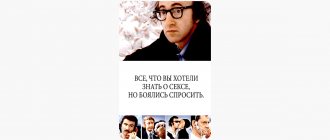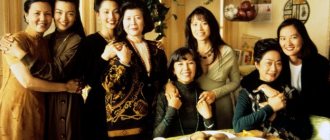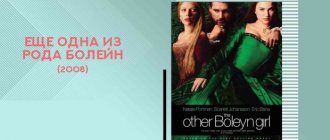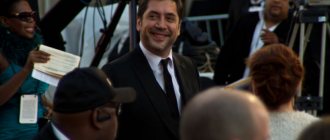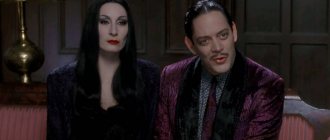Cranes and Gays: Xavier Dolan's 10 Favorite Films
In 10 years, Xavier Dolan has gone from a child prodigy who made his debut at 19 to a major Canadian director. By the age of 30, Dolan had directed seven feature films, four of which received prizes at the Cannes Film Festival. In November, Xavier’s new film “Mathias and Maxim” will reach Russia, and now in theaters is “The Death and Life of John F. Donovan,” Dolan’s English-language debut last year starring Kit Harington, Susan Sarandon and Natalie Portman. For the premiere, we tell you what films the director loves and why.
"Crazy Pierrot" (1965)
One of the best films
Jean-Luc Godard
starring
Jean-Paul Belmondo
.
Ferdinand, Belmondo's hero, runs away with his young nanny Marianne (Godard's ex-wife Anna Karina
) from his rich Italian wife.
Marianne turns out to be a real gangster, and Ferdinand hides with her from the mafia on a deserted island. There he understands that he and Marianne have no common ground, but their paths will cross several times. Interesting fact: the film is based on the detective novel “Obsession” by the American Lionel White, and is named after the French bandit nicknamed Crazy Pierrot. Why: Dolan considers "Pierrot the Fool" the best film of Godard's career. "Absolute freedom. Freedom of speech, freedom of images, freedom of flowers and freedom of love. This is Godard at the peak of his career,” says the director. In addition, Dolan was inspired by "Pierrot the Fool" when working on
"Imaginary love."
At the very least, he learned lighting techniques and play with color from Godard’s film.
"Goodbye Children" (1987)
Autobiographical drama by Louis Malle about life in a French Catholic boarding school for boys during World War II. 1944, the Gestapo takes three Jewish students and the director from a French Catholic boarding school. The boys are sent to the Auschwitz concentration camp, and the man is sent to Mauthausen. At the time of the events, Mal was 12 years old. He won seven Cesar Awards for Goodbye Children.
Why: Mahl is one of Dolan's favorite directors. He said that he liked both fiction and documentaries of the Frenchman. “Mahl flirted with genres, tried all kinds of techniques, traveled all over the world and refused to let go of his first love: documentary filmmaking,” Dolan explained. Playing with contrasts, vivid antagonists and the emotions they evoke—that’s what the Canadian appreciates in Malle’s films. According to Xavier, no one showed Vichy France and the collaborators better than Malle in the films Goodbye Children and Lacombe Lucien.
"Taste of Cherry" (1997)
A French-Iranian drama about a middle-aged man who decides to commit suicide and tries to find an assistant to bury his body in the mountains. All the main character’s fellow travelers refuse the strange offer: a Kurdish soldier, a theological seminary student, an Afghan. An old taxidermist agrees to help, but on the way to the mountains he tries to dissuade the man from his plan and says that he once wanted to commit suicide, but changed his mind because of the taste of the fruits of the cherry tree on which he wanted to hang himself.
Why: “'A Taste of Cherry' is a wonderful meditation on death and the meaning of life, and a reminder of the strange ways in which life shows us its beauty,” Dolan said. “The long takes and car sequences that Abbas Kiarostami is so famous for are a treasure.”
"Four Hundred Blows" (1959)
A film that seems to be mentioned in such lists by every third modern director. In the center of the plot is Antoine Doinel, a truant, a liar and just a walking disaster, who regularly gets involved in dubious adventures and ends up in a closed institution for difficult children. The Four Hundred Blows is the feature debut of François Truffaut and the first leading role of Jean-Pierre Léaud, a favorite of directors of the French New Wave.
Why: “The first time I fell in love and felt loved in return. [This is a film about] my childhood (with nuances, of course). I’m sure I’m not the only one who wondered where the cameras were hidden in the house,” Dolan joked. The director knows he's not the only one inspired by The Four Hundred Blows to start filming. In addition, Dolan appreciates the performance of Jean-Pierre Léaud: “Over time, he created his own acting rules, his own school and opened doors for many actors and actresses. No one will ever say: “Leo is so bad in this or that film.” Besides, you would never think that anyone could replace him in any film.”
"The Cranes Are Flying" (1957)
A Soviet classic that won two prizes at Cannes and competed for best film with Bergman's Wild Strawberries and Fellini's Nights of Cabiria at the BAFTAs. “The Cranes Are Flying” by Mikhail Kalatozov is a story about love and separation during the Great Patriotic War. In 1957, the film amazed viewers with many things: the heroine of Tatyana Samoilova, who played a free woman who did not wait for her lover from the front and married his brother, and the impressive cinematography of Sergei Urusevsky, and innovative artistic techniques in the spirit of the avant-garde artists of the 1930s.
Why: Dolan said The Cranes Are Flying impressed him with its super-expressive cinematography, particularly the shots of cranes and twisting birch trunks, for which Urusevsky built a circular camera rail, and the scene in which Veronica runs through the crowd trying to find Boris. According to the director, this is not only a great love story, but also a film with excellent composition, lighting and actors. “Tatiana Samoilova is magnificent and touching. Her playing is quite minimalistic for that time,” noted Xavier.
"Whispers and Cries" (1972)
Two sisters watch a third die of cancer in the red room. Instead of relatives, the unfortunate patient is cared for by a maid who is ready to do anything to ease the mistress’s torment. Pain and hopelessness are mixed with memories from childhood - it seems that the only time when the sisters were happy.
Why: Dolan was succinct when explaining why he loves Ingmar Bergman's gritty theatrical drama: “Very impressive, almost frightening performances, as well as careful portrayals of pain, illness, grief and loneliness. Oh, and, of course, red.”
"Forbidden Games" (1952)
World War II, France. Five-year-old Paulette's parents die after an airstrike, and the Parisian girl is taken in by a peasant family. Paulette strikes up a friendship with their 11-year-old son Michel. Against the backdrop of war horror, children play strange games: collecting animal corpses and burying them in an abandoned barn. The film by René Clément, based on the novel “Secret Games” by François Boyer, received an Oscar and a prize at the Venice Festival.
Why: According to Dolan, this film is in his top 3 best romance stories. “Forbidden Games is a meaningful study of children’s morals and the children’s universe,” said the director. He also noted how poetic the film is and how wonderfully six-year-old Brigitte Fosse plays - “the embodiment of femininity, despite her age.” The director also likes the soundtrack, composed by Spanish classical guitarist Narciso Yepes.
"The Discreet Charm of the Bourgeoisie" (1972)
One of the last films of Luis Buñuel, in which he once again ridiculed the bourgeoisie. A surreal dramedy about a group of rich people who are constantly getting in the way of something (or more often, someone) from having lunch.
Why: Xavier said that he was amazed at how Buñuel meticulously handles small details in his films, which ultimately build a harmonious whole. In addition, the director likes the unexpected ending in The Quick Charm of the Bourgeoisie. “A delightful invasion of the bourgeoisie. A very funny, unusual and intellectual work about rich people,” Dolan said.
"Bad Night" (1985)
Gus Van Sant's debut film, based on the autobiography of American poet and artist Walt Curtis. The plot centers on a young gay man, Walt, who works as a salesman in a tobacco store and falls in love with an illegal immigrant, Mexican Johnny. Walt tries to get closer to Johnny, but he avoids his new acquaintance in every possible way. The low-budget black-and-white "Bad Night," which featured non-professional actors, was called the best independent film of 1986 and was compared to Jarmusch's breakthrough "Stranger Than Paradise."
Why: “Van Sant is my hero. This film has everything I love from Van Sant: brilliant camera work, dull and unfulfilled love, beautiful car scenes. The narrator's voiceover is moving and truthful and never intrusive. It’s a very authentic, intimate and timeless film,” Dolan said.
"Beauty and the Beast" (1946)
The first film adaptation of the French fairy tale of the same name, directed by Jean Cocteau - writer, poet, playwright, artist and director. Cocteau's film is notable for its fantastic makeup for that time (now, however, it looks as comical as the new "Cats"), costumes worked on by fashion designer Pierre Cardin, and three roles of Jean Marais, Cocteau's partner.
Why: The Canadian noted the revolutionary technical effects and, again, the camera work. “1946! How is this even possible? Not only the film, but Cocteau himself was revolutionary. All these tiny elegant details: candlesticks that hands hold from walls, pearls that are magnetically attracted to the palm, playing with mirrors. Loving this film is obviously a radical statement of one's sexual identity,” Dolan said.
